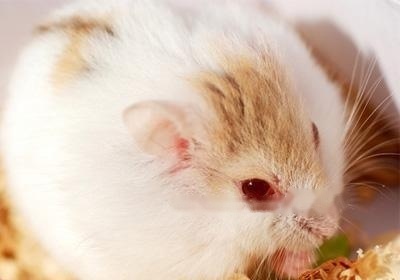
Amber Hamster
Length: 10-12cm
puddinghamster, also known as gills, hamsters, sunflowers, Latin name Cricetidae. Pudding hamsters are a relatively common variety, because the body color of the pudding hamster is yellow, and it is very similar to the yellow of the pudding, it is called It is a pudding hamster, which is very popular among mouse lovers.
Phya: Chordate
Order: Rodentia
Genus: Short-eared Hamster
Kingdom: Animalia
Class: Mammalia
Family: Hamster
The puddinghamster has a very special body color because Its unique coat color and docile personality make it very popular. So what are the special appearance characteristics and habits of this hamster?
The pudding mouse is one of the Phodopus sungorus. The jakarya hamster is pet a common three-line mouse, pudding The body color of the rat is yellow, which is very similar to pudding, so it is called pudding rat, which is bred in Japan. Pudding mice with orange or gold stripes on their backs are called yellow puddings, and milky white coats are called white puddings; they have a gentle personality, are highly interactive with people, and are easy to care for, so they are very suitable for beginners or children. Small pet rat.
Like other pet mice, the pudding rat has the characteristics of not occupying space, feeding and cleaning, and has a gentle personality. Pudding mice are very afraid of heat and need to adjust the temperature in summer. Pudding and silver foxes can breed golden foxes, but golden foxes and white puddings look very similar. This variety is rare, so the price is higher.
puddinghamster's ideal living temperature is 20~28 degrees, but it doesn't mean that it doesn't matter how it changes within this range. A temperature of 20 degrees in the evening and 28 degrees at noon is not good for pudding hamsters. Because pudding hamsters are very sensitive to changes in temperature, the body may not be able to bear it, so the ambient temperature of the breeding environment should be maintained as much as possible. In addition, pay attention to the following supplies when setting up the environment for pudding hamsters.
1. Cushion: Poplar is better but also more expensive. A pack is about $50. Many people use pine, ranging from 20 to 40 yuan. Try to choose the one with less dust. Other types include paper, corn, and sawdust.
2. Bath sand: WILD-308 is about 65 yuan to 90 yuan per pack. It can be used for about half a year and can be recycled. When there is an odor, it should be replaced. If it is wet when it is replaced with a new one, the wet place can be taken out separately. Some people will use cat sand instead of bath sand. I don't agree with this practice. Cat sand works well as mouse toilet sand. But for mice, the particles are too large, which is not conducive to getting rid of the bacteria on the body.
3. Drinking water: boiled water must be used, and pure water should be fed if conditions permit (mothers should be properly fed fresh milk during lactation).
4. Teeth grinding supplies: There are special teeth grinding wood and mineral salt for teeth grinding, but the mice may not like it, and the teeth grinding snacks will be more popular. Prices range from 10 to 60 yuan. Never use disposable tachyons, popsicle sticks and the like.
Puddinghamsters are small in size, but they also have many requirements on the food they feed. What can be eaten and what cannot be eaten, What else can be fed as a supplement is exquisite, and the editor will analyze it for you.
1. Edible food
1. Vegetables: green vegetables (such as green vegetables), carrots, pumpkins (green and yellow vegetables are preferred)
2. Seeds: sunflower seeds, peanuts, walnuts, pine nuts (don't give too much) safflower seeds, pockmarks
3. Fruits: apples, strawberries, cherries, bananas, Grapes (please do not give too much due to high sugar content)
4. Cereals: wheat, corn, millet, oats
5. Plants: clover, dandelion, kudzu, car Foregrass
6. Animal protein: beef, chicken, boiled egg protein, worms, pets with small fish Dried
2. Harmful food
1. Fruits: almonds, plums, loquats, peaches, water peaches, apple seeds (can cause heart disease Paralysis, gastrointestinal disorders, dyspnea)
2. Vegetables: onion, green onion leaves (will destroy blood components), garlic, ginger, leeks, celery (too irritating) tomato and potato leaves and stems
3. Plants: narcissus, tulip, morning glory, rhododendron, orchid, calamus, hyacinth, fern, cyclamen, hydrangea, bellflower, fern, Alice
4. Others: human snacks, biscuits, chocolate, coffee (these two foods can cause heart palsy), alcohol
3. Tonic series
1. Mealworm: very high in protein, it is a holy product in supplements, please don't feed too much in one day.
2. Dried small fish: It contains calcium and animal protein. Older rats can grind it into powder for consumption.
3. Nutritional cream: Available in the market, there are deep-sea fish oil and cherry flavors.
4. Nutritious water: It is sold on the market, and the price ranges from 100 to 150.
5. Glucose water: Glucose can be purchased at the pharmacy, mixed with boiling water at 1:10 and fed. Can increase appetite.
6. Artificial baby mud: you can buy it in supermarkets, about 0.5cc at a time, please keep it in the refrigerator.
7. Small animal milk replacer: Most of the stores that sell rat supplies have it. One pack is brewed with 10cc of water. The rat drink less, please decide the amount by yourself and drink it immediately.